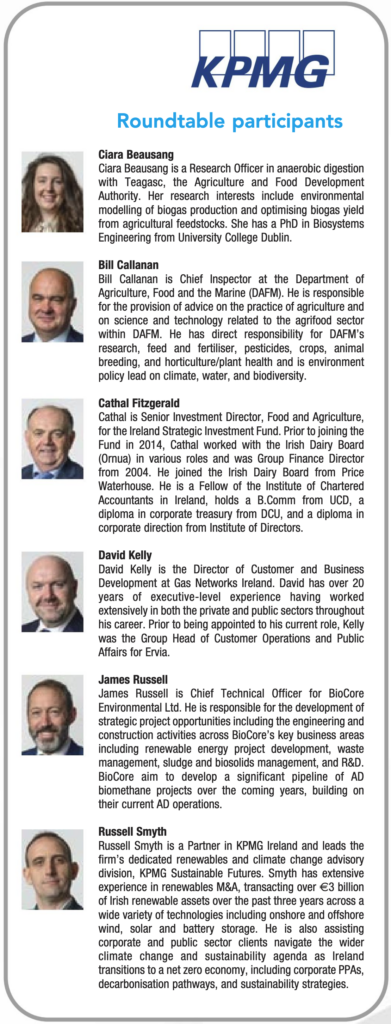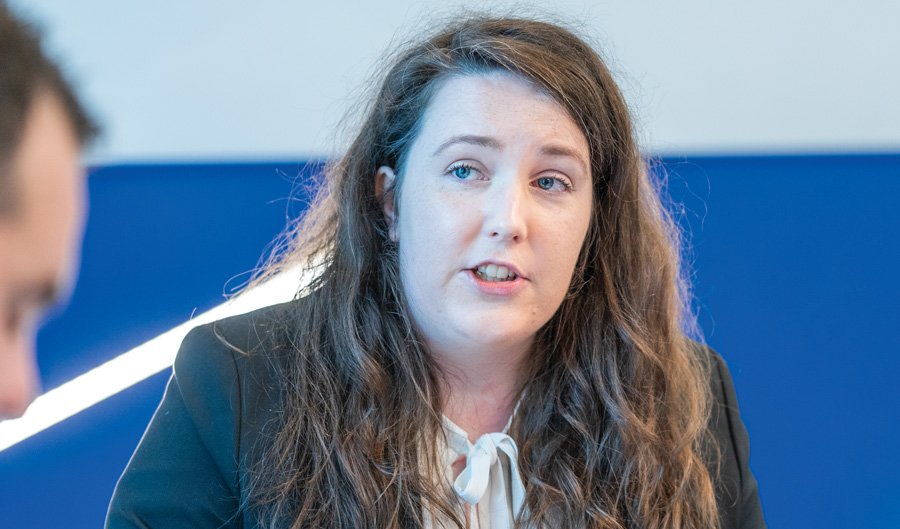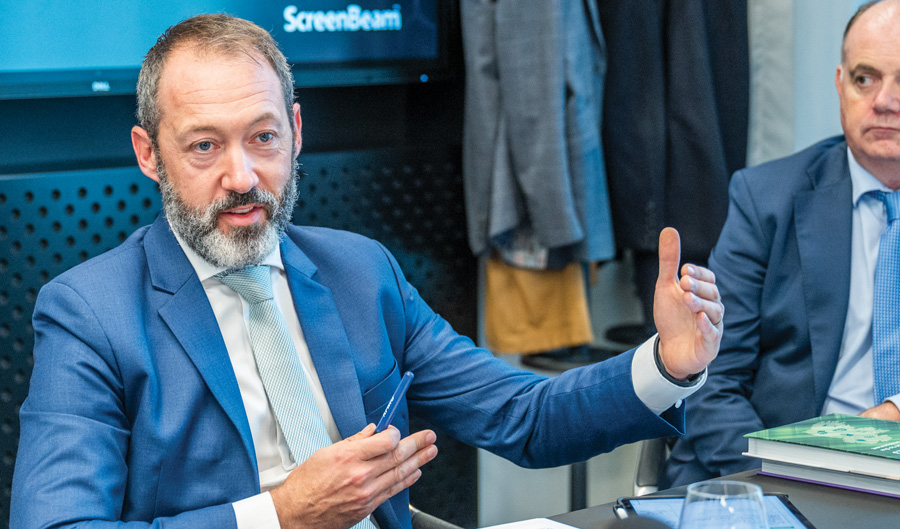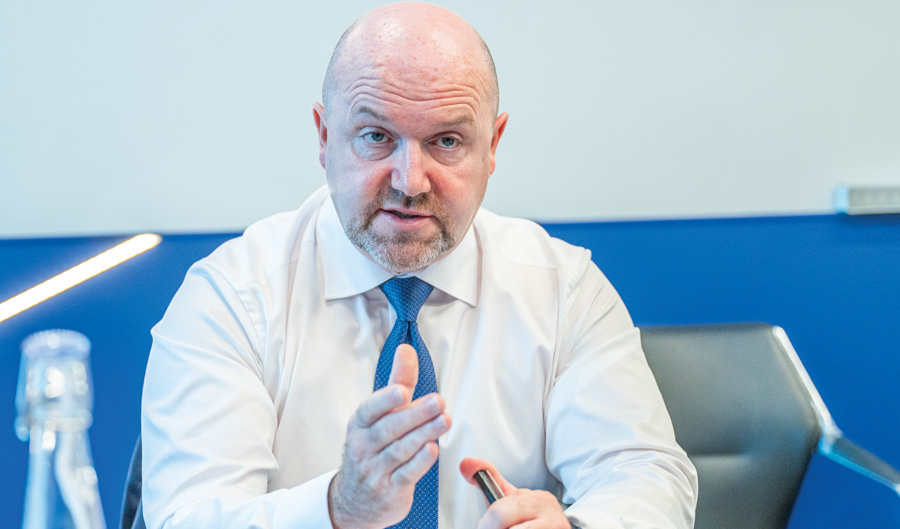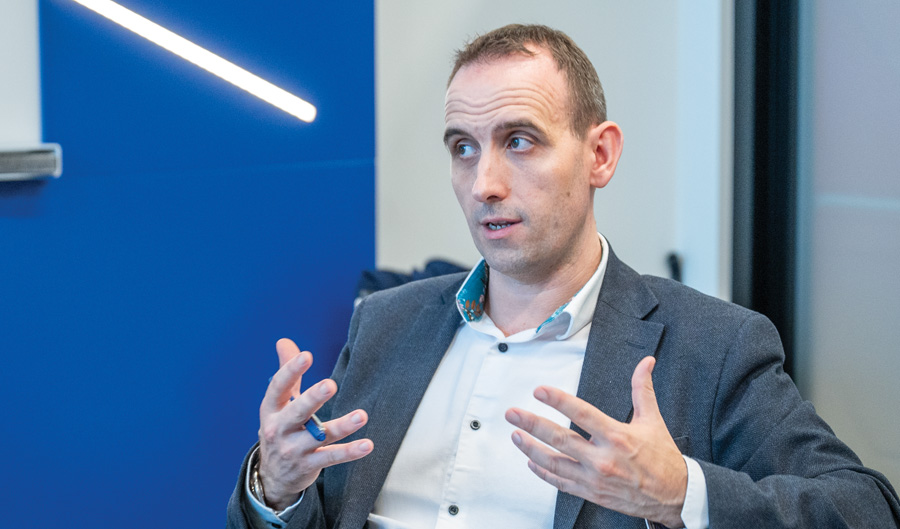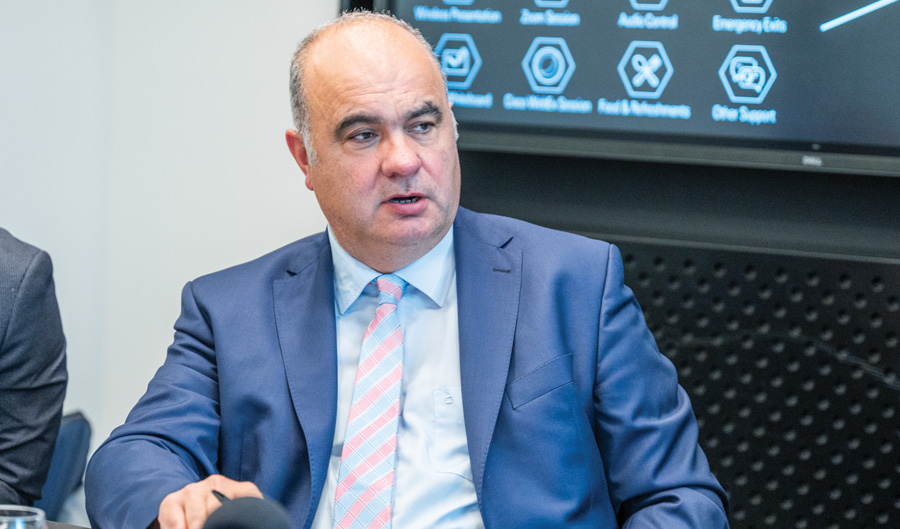
Decarbonising Ireland’s heat demand
9th October 2023
National Hydrogen Strategy published
9th October 2023The biomethane opportunity in Ireland
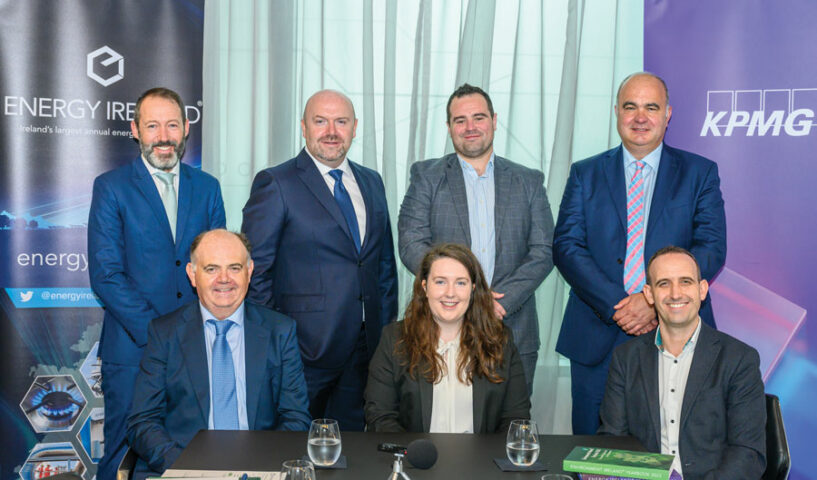

KPMG hosted a round table discussion with key stakeholders to discuss the opportunity of developing a biomethane industry in Ireland.
What are the most significant benefits of establishing a biomethane sector in Ireland?
Ciara Beausang
The SEAI National Heat Study assessed that around 80 per cent of the potential feedstock for biomethane would come from agriculture, signifying how important the sector is to that
5.7 TWh by 2030 target. The benefits are the opportunities for farmers to decarbonise, to diversify through anaerobic digestion, and realise alternative land use opportunities.
One of the major benefits of biomethane, which has really emerged in the last 18 months, is security of supply, because it represents an opportunity to reduce our reliance on UK imported gas and give us greater certainty around gas supply. On the consumer side, biomethane is a relatively low cost solution because its similar make up to natural gas means little-to-no change to infrastructure and existing plant, while creating a pathway to the longer-term use of green hydrogen. Finally, Gas Networks Ireland’s recently published Biomethane Energy Report highlighted a large awareness of the local economy benefits of anaerobic digestion plant building, and an appetite to drive economic growth.
Russell Smyth
What is so compelling about biomethane as an energy vector is its potential to align with so many national policy objectives which can deliver positive benefit. While security of supply benefit has only really emerged in the last number of years, there are a host of other benefits such as the decarbonisation of agriculture, the reduction in fertiliser usage, and the economic stimulus potential, for example. It is a tool that we can use to drive so many other policy initiatives across the country.
Bill Callanan
There are two drivers of AD within current government policy. The first is the ambitious targets within CAP23 for agriculture, based on the opportunities of reducing emissions, removing emissions through land use, and a contribution to energy. That contribution to energy will be a combination of the opportunity for biomass, for solar on farms, and the development of AD. The second driver is the EU’s Methane Strategy. While primarily focused on fugitive emissions of the gas network, for agricultural methane it identifies opportunities for emission reduction in breeding, feeding, and developing AD, towards that 25 per cent reduction target.
James Russell
The most identifiable benefit is the potential for biomethane, as a renewable resource, to work in those difficult-to-decarbonise sectors of heat and transport. Importantly, it is one of the true circular economy technologies where you can deal with a waste problem, produce a renewable resource, and displace inorganic fertilisers. If you include the CO2 capture potential, we can see a situation where you potentially end up in a carbon negative scenario. Added to that is the fact biomethane is storable, transportable, and dispatchable.
Cathal Fitzgerald
Ireland’s national food strategy targets the emergence of Ireland as a leader in sustainable food systems and the reality is that to achieve this, the food corporates need sustainable solutions. Biomethane provides a solution, particularly in relation to heat use by processors. Currently, we are seeing large processors import solutions from elsewhere, but we need to have our own solutions if we are to retain and support those businesses of scale. On the flip side, biomethane offers the opportunity of a new sector in Ireland, one that is rural-based and embedded in communities. In the short term, achieving the 5.7 TWh has the potential to create up to 3,000 jobs, however, longer-term evolution of the sector and upgrading of industries such as biomanufacturing and bioprocessing will be of great benefit.
Which sectors will show the greatest appetite to procure biomethane gas?
“The benefits are the opportunities for farmers to decarbonise, to diversify through anaerobic digestion, and realise alternative land use opportunities.”
Ciara Beausang
James Russell
One of the major markets will be power generation, large energy users, entities that would have the ability to directly purchase biomethane to meet their carbon requirements. The transport sector will be interesting too, as biomethane is one of the proven technologies that can decarbonise transport.
David Kelly
Our role in Gas Networks Ireland as the network operator is almost like a matchmaker, we link renewable gas developers to customers and in particular the industries that have demand for high amounts of energy. We are also seeing interesting movement in transport. DHL, one of the largest logistics companies in the world, has recently made an investment worth €80 million into a dedicated biomethane production facility in Cork and purchased 150 BioCNG vehicles that will result in an annual carbon reduction of 15,000 tonnes. However, we do not have the renewable gas to supply those 150 BioCNG vehicles today. We will inject about 70GW this year and all of that is going into transport and that is a problem for the other industries that need it. As soon as we can get volume and scale in place, there is a large market out there to take it.
Russell Smyth
One of the challenges is that we will never have enough biomethane, certainly in the early years, to satisfy all the demands that will be placed upon it. One of the decisions that has to be taken on government policy is whether there is a requirement to guide its allocation. In theory, biomethane should be directed to the sectors where it will have most substantial decarbonisation benefit, and research suggests that will be the sectors that have the fewer alternatives available. That is typically high temperature thermal users, however the problem in talking to many sector participants is that while they would love to utilise biomethane, there is a risk that they cannot afford to pay the premium over natural gas, and it will instead go to sectors that can afford to pay it, such as electricity generation. That generation however may be better done through offshore and onshore wind, so there is a risk that a free market will not necessarily allocate this to the sectors that the State would see as the most optimal users.
“The ability to have that cost certainty in the long term means that industry is more willing to pay that higher price, in the knowledge that they also have to satisfy that external pressure to decarbonise.”
James Russell
Bill Callanan
From a State perspective, the question is: how do we optimise the contribution and the benefit for what is a scarce resource? We are a food island; we have an opportunity with a strong co-op structure to get involved in this. If we look at areas such as dairy processing, where there is a high heat demand, it is a natural fit in terms of circularity. If you look at it from a livestock protein point of view, a grass-based rain-fed system is very sustainable on an international scale. Linking that with a processing system that is circular would give you a huge opportunity. There is then the issue of cost differential between natural gas and biomethane and as a government we have to look at where there are logjams in terms of regulation or feedstock or other issues. They have to be addressed in the strategy to chart a mechanism for going forward for the industry to give it some leadership in that area.
Ciara Beausang
There is a natural fit with the food sector and the opportunities AD can provide in terms of circularity, especially along the whole supply chain. Digestate is going to be a valuable byproduct from the AD sector, so there is a good story to tell there for the food sector. One of the other things to think about is the potential of more decentralised biomass and how that could be used in industry clusters where there is demand. Not all of our biomass resource for AD is going to be located directly beside the gas grid, so there may be opportunities for more decentralised solutions for these types of energy users.
To what extent can the sector develop without a specific government biomethane subsidy support?
Russell Smyth
Government subsidy is undoubtedly the most topical discussion in our consultation with stakeholders as we continue to develop the draft recommendations for a national biomethane strategy. The argument for support is often framed in the context that no other European country has developed a biomethane industry without some form of government specific support. While it is likely some form of government support is required, we are in a much different landscape than was the case for Denmark, France, or the UK in the last decade. Up to two years ago, industry demand was minimal and even then, demand was based on assured cost-parity with natural gas. Now, corporates with commitments and budgets to decarbonise are no longer looking at natural gas as a comparator, it is no longer an option. The demand for the next-best, decarbonised option to natural gas may be enough to break the cycle of the need for significant government subsidy.
“The problem is that Ireland will end up with a lot of plants selling straight into the sectors which have the most cash, sectors which could possibly be better served by offshore wind.”
David Kelly
James Russell
I would agree in that we do not see the Renewable Heat Obligation (RHO) as initially being a major driver of AD, because there is no certainty of the price for biomethane. Instead, the drivers are from industry, where large energy users are willing to commit to taking certain volumes over the longer term. Instead of hedging their bets on the price of natural gas, there is a realisation that biomethane can enable cost projection of up to 20 years. The ability to have that cost certainty in the long term means that industry is more willing to pay that higher price, in the knowledge that they also have to satisfy that external pressure to decarbonise.
Bill Callanan
I would be reluctant to interfere with the market but where plausible, government support has to be focused on areas that align with government policy because we are using taxpayers’ money. The energy cost shock over the past 12-18 months has necessitated a reappraisal of risk, and we are now seeing organisations giving security of supply as much consideration as that external pressure to decarbonise their offering. The reality is that the capacity to pay depends on the sector and so government support and policy direction must try and find the sweet spot that best meets the objectives set out in CAP23. That is not just about finance, it is about developing a framework which deals with things like regulation, planning, and the speed of process of approval.
“There is a risk that a free market will not necessarily allocate biomethane to the sectors that the State would see as the most optimal users.”
Russell Smyth
Cathal Fitzgerald
We know that there are buyers out there willing to pay a green premium, but the challenge lies in ensuring we do not have an industry, with greater capacity to pay, outcompeting others where solutions to decarbonise are much more limited. The focus must be on decarbonising those hard-to-abate sectors, but in a free market, resources go to those who pay the most. Can we direct to the areas where there are no alternative solutions? I think to get to the core of this challenges it will require intervention.
David Kelly
The key word is certainty. One year ago, I would have said that based on all other European biomethane industries, government support was clearly needed. However, what we are witnessing through recent initiatives is large energy entities securing equity funding to build AD plant based on what they see as latent demand. Certainty in this regard is based on sectors being willing to sign corporate PPAs, but that is far from ideal. It is very understandable as a business model in the absence of government supports, but the problem is that Ireland will end up with a lot of plants selling straight into the sectors which have the most cash, sectors which could possibly be better served by offshore wind.
Bill Callahan
One of the cautions government is considering is the role of farmers in a large biomethane industry. Food waste will be the predominant raw material for biomethane in, say, the first 50 of 200 AD plants, depending on scale. However, beyond that it will be silage, etcetera. The critical thing here is that farmers do not just become price takers in terms of the provision of the feedstock but need to fully engage and not just be suppliers of raw material. Design of support needs to be based on engagement with farmers and communities.
“The energy cost shock over the past 12-18 months has necessitated a reappraisal of risk, and we are now seeing organisations giving security of supply as much consideration as that external pressure to decarbonise their offering.”
Bill Callanan
Ciara Beausang
The idea has been floated of the possibility of biomethane being costed based on its carbon footprint in relation to trading, which is something that is really interesting, particularly in relation to agriculture. In the current iteration of the Renewable Energy Directive, there is a credit given to manure when used as a feedstock, because it is recognised as improved manure management when compared to traditional slurry storage. The co-digestion of cattle slurry and grass silage, bringing down the carbon footprint means that the attractiveness of Ireland’s biomethane could be accelerated.
“It is important for agriculture and rural farmers that they see the credit of their endeavours going to agriculture.”
Cathal Fitzgerald
How can participation of the rural economy be maximised?
Ciara Beausang
There is an onus on the agriculture sector to decarbonise, but a challenge exists in the recognition that while farmers will play a vital role in the production of these feedstocks, most of the displacement will actually take place in the energy sector. I think it is really important to recognise the role of the farming community in their contribution to the broader decarbonisation agenda and to raise awareness within that community of the longer-term benefits such as biofertilisers and digestates, once the industry is up and running. Finally, I think we need to acknowledge those rural communities where AD plants are located. The Renewable Electricity Support Scheme’s establishment of a Community Benefit Fund has been very successful, and I think there is scope to develop something similar for rural communities in relation to creating a biomethane industry.
David Kelly
Education and awareness are probably the greatest challenges we have in relation to plant development. Gas Networks Ireland recently visited the site of a 600GW AD plant in Billund, Denmark which is designed in a way that ensured seamless integration with its surrounds and is recognised for its local positive impact. Those are the types of designs we need to promote. Equally, Ireland’s first directly connected AD plant will go live in Q3 of 2024 in Munster. When operational, the volume of biomethane produced could make 40 per cent of Waterford’s gas supply renewable. If we can educate around those types of examples, we can bring people along and they can see the community benefit.
James Russell
It always perplexes me that we have a renewable technology that can slip so seamlessly into the agriculture industry, an industry that is being hammered from a climate perspective, that farmers are not jumping up and down demanding an AD agri-industry. Maybe the reason is that there is a perception that the benefits are going to other sectors, but in any case, there has been a failure to properly articulate the multi-benefits of the industry and to bring the agriculture communities along.
Bill Callanan
There are learnings to be taken from wind energy development, where engagement with communities has massively changed the dynamic locally. One of the main benefits I see is how the diversification of land use fits in with the changing nature of the farming lifestyle. We are now seeing a significant amount of part-time farmers. There is a genuine appetite from part-time farmers for income certainty without the traditional time commitment, and particularly when it comes to beef farming, there is an opportunity to utilise land with less demand on time. Importantly, however, it must make financial sense.
Cathal Fitzgerald
It is important for agriculture and rural farmers that they see the credit of their endeavours going to agriculture and I think there is a role for the large corporates in this regard. As large businesses in their own right, corporates can not only be off-takers, but also have a role in communicating to their members the positive benefits. Once you get over the barrier of social acceptance, then the benefits for the rural economy become clear through exemplars. That is about effective communication, but it is also about collaboration with key stakeholders to help promote the benefits.
Russell Smyth
Northern Ireland represents a good example of government policy enabling farmers to make lifestyle choices through certainty. I am not aware of any farmer in Northern Ireland who has expressed regret about building an AD plant and in fact, most are asking how they can expand. However, there is a challenge in that the scale of electricity-led Northern Ireland plants do not translate into the modern biomethane-led approach expected to dominate going forward, so it is unlikely that there is a desire to replicate that scheme entirely.
What is the most significant challenge the sector faces in achieving scale?
Cathal Fitzgerald
It is hard to identify one single challenge due to the interlinkages between planning, licensing, and all other parts of the process, but the one I would pick is the social acceptance piece. If we can get social acceptance and policy that gives people confidence in this sector, where certainty feeds into pathways, then people will see that this is an acceptable way for them to make a living.
James Russell
For us, it is down to price certainty on the biomethane side. Long-term guaranteed revenue streams that we can have in our business models is the key factor.
Bill Callanan
Confidence. Confidence locally, in terms of community involvement; confidence from the farming sector, in terms of engaging with it; and confidence in terms of the business model to allow the finance to flow.
Russell Smyth
We have a proven technology and I believe there is demand to provide a route to market. There is no shortage of funding, and there are developers who want to develop it. The thing I am most worried about is the timelines of getting projects through planning, the EPA, vetting, and getting grid connections built. Every single one of those has the potential to create a long lead time, which would make this a slow sector in which to build tangible momentum.
David Kelly
Regulation. The CRU has a key role to play in the safety case around all of this. We have had a challenge over the last number of years. We have CNG running in transport and got a safety case manual signed off in September 2023 after four years. We are going to have to do the same with our central grid injection facility in Mitchelstown and with all the other facilities we build around the country. Educating the regulator and the policymakers on all of this is a challenge. We need them to feel confident that this is a well-proven technology and all we are doing is catching up.
Ciara Beausang
The main challenge is going to be the knowledge transfer and demonstration that is going to be required in the timeline we have until 2030. We need to have examples of farms where feedstocks are being grown sustainably, where farmers can see what it looks like in practice and examples of plants that are using agricultural feedstocks, so we can show what that looks like to the industry. Teagasc will have a vital role to play in terms of that knowledge transfer.

